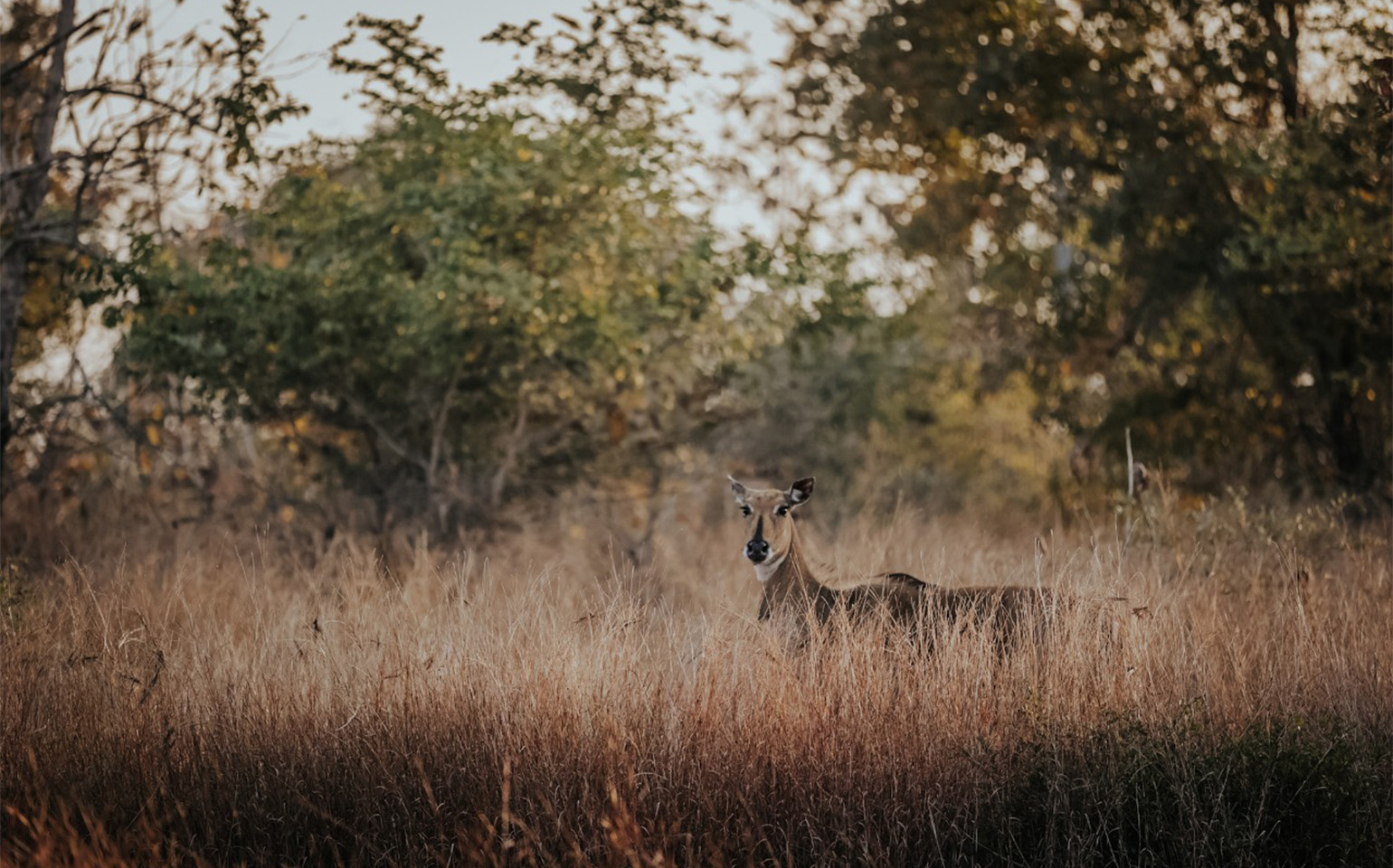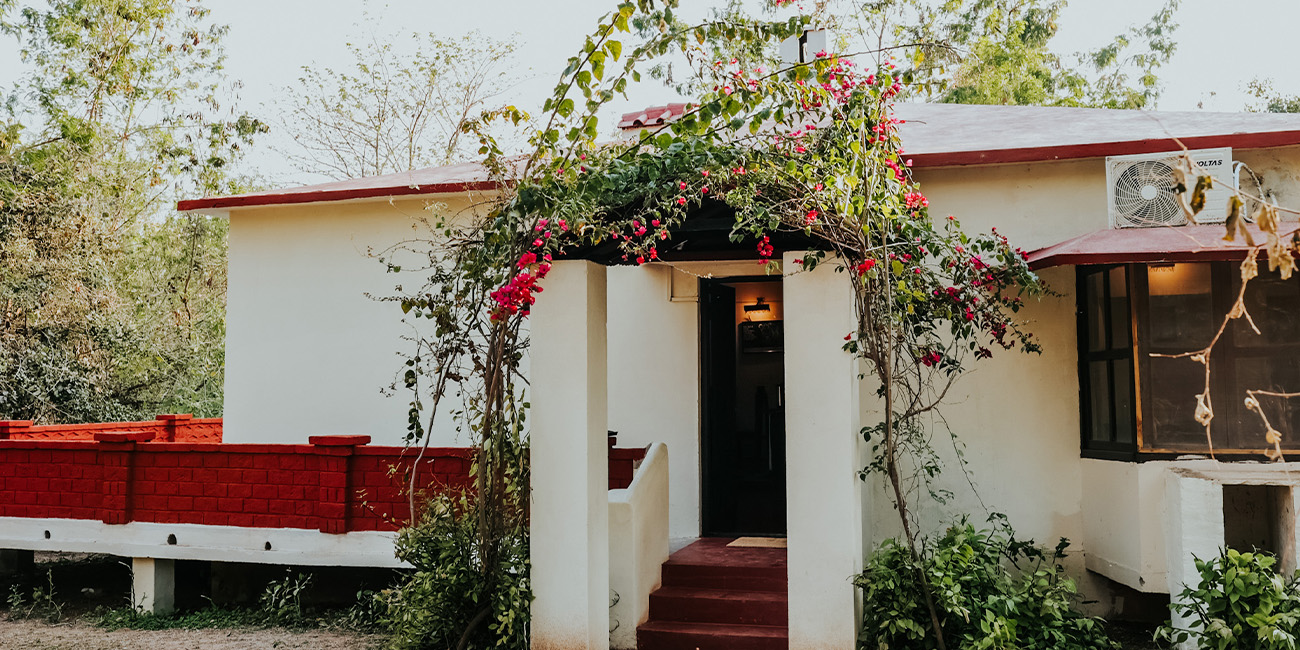Panna Tiger Reserve spread over 1645 sq km
was carved out of the hunting reserves of the erstwhile Panna, Chattarpur, and Bijawar states. Panna was accorded sanctuary status in 1975 and upgraded to a national park in 1981.
Park Information
In 1994, it became India’s 22nd Tiger Reserve. Panna is situated at the junction of the Gangetic plains and the Deccan peninsula. The Panna hills provide the catchment area for the Ken River, which is the lifeline of the park.
It is predominantly an open forest, offering a great opportunity to see the Tiger and other mammals. It also supports closed canopy forests, open forests with short grass, and undercover, open Savannah woodlands which reflect sub-Saharan habitats, tall grasslands, and degraded scrub.
Some of the key features of the park that makes it distinct from other parks in MP include;
- The reserve which has a bench topography can broadly be divided into three distinct tablelands on the Panna side: the upper Talgaon Plateau, the middle Hinnauta plateau, and the Ken valley. A Series of undulating hills and plateaus rise on the other side of the Ken river in Chattarpur district making it a prime tiger-land located in Vindhyan Hills in northern Madhya Pradesh.
- The Ken river, which flows through the Reserve from south to north, is home for Gharial and Mugger, and other aquatic fauna and is one of the least polluted rivers and a tributary of Yamuna. It is one of the sixteen perennial rivers of Madhya Pradesh and is truly the lifeline of the Reserve. Ken offers some of the most spectacular scenery to the visitor while it meanders for some 55 km through the reserve.
- Fragile through the dynamic dry deciduous forest, the terrain of the reserve is characterized by extensive plateaus and gorges accompanied by mesmerizing waterfalls.
Highlights
Size
The size spread over a sprawling 1645 Square Kilometer
Forest Type
Dry Decidious Forest with prominent Teak Vegetation
Mammal Focus
Leopard, Tiger, Sloth Bear, Striped Hyena, Rusty Spotted Cat, Crocodile, Ghariyal, Wild Dogs and Smaller Cats
Birds
Sulphur Bellied Warbler, Himalayan Griffon Vulture, Eurasian Eagle Owl, Stork Billed Kingfisher
Exclusive Park Activities
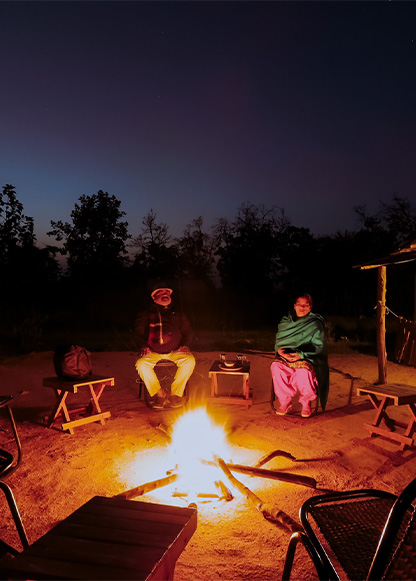
Jhinna Night Safari Camp
It is an hour’s drive through the buffer zone of Panna Tiger Reserve to a Camp run by local villagers offering 05 mud houses built in the local village architectural style. A good opportunity to see nocturnal animals including Civets, Jackal, Porcupine, Hyena, Fox, Sloth bears, and Cheetal. Also seen less frequently are Wolves, Rusty-spotted cats, and Leopard cats.
Jhinna Night Safari Camp
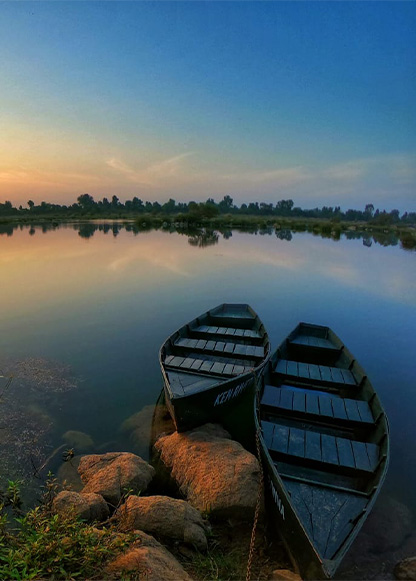
Boat Ride
Enjoy the carefree boat on the mesmerizing Ken River with hands-on experience in rowing, from our local boatmen, the real adventurous can do it on the truck tube as their boat, as used by the local fishermen. Alternatively, inside the park is also an hour ride on a motorized boat, where the real unlucky misses the crocodiles. The river ecosystem offers a great opportunity for bird watching especially in the winter months with innumerable migratory birds.
Boat Ride
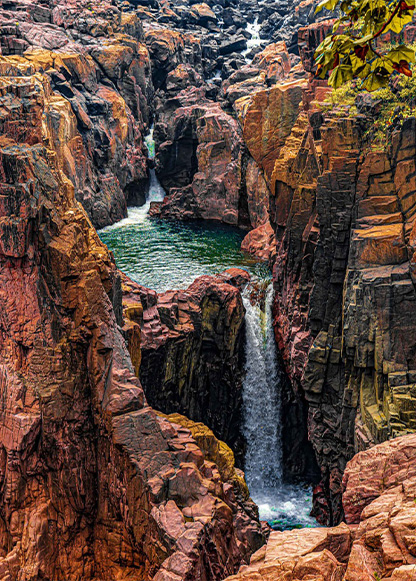
Waterfalls
Panna is the land of cascading waterfalls- Raneh falls and Pandav falls are great attractions, both are situated in the reserve forest. Along with Raneh falls, Ken Gharial Sanctuary can also be visited. On a sunny afternoon, the guests can even see innumerable Gharials basking in the sun.
Waterfalls
Where to stay in Panna
Ken River Lodge made a humble start in 1986 - one of the pioneers of wildlife tourism in the country. The lodge is set in a forested estate of 50 acres and has been built with natural materials sourced mostly from neighboring villages and surrounding areas. The forested estate is home to many mammals, birds, and reptiles. The Accommodation is simple and rustic with a few mod cons thrown in. The six huts and six cottages are spread out in a mixed jungle in undulating terrain, giving a jungle experience, that few in the country can parallel. The lodge also boasts of a 3000 sq. ft. Machaan where the meals are served. The machaan popularly known as the Tree House overlooks the Ken River and offers fresh home-cooked meals.
How to Reach Panna
By Road
Panna Tiger Reserve is located on National Highway – 39 and is well connected by road to many towns.
By Air
Air: Panna is well connected by Air and the closest Airport is Khajuraho, 26 km away. There are daily flights from Delhi and Varanasi by many leading carriers.
By Train
Panna is also well connected by Indian Railways from across the country. From Delhi- Gatiman Express and Shatabdi chair cars from Delhi to Jhansi From Mumbai- Satna (70km) and Jhansi (176km.) are convenient railheads. Punjab mail, Dadar Bareilly express, Dadar Amritsar Express, Mumbai Howrah mail, etc are the few trains, which operate on this route.
Accessibility
- Khajuraho Railway station – 21 KM
- Khajuraho Airport – 24 KM
- Satna Railway Station – 91 Km
- Jhansi Railway Station – 185 Km
- Gwalior Airport - 285 Km
- Jabalpur Airport – 235 Km

